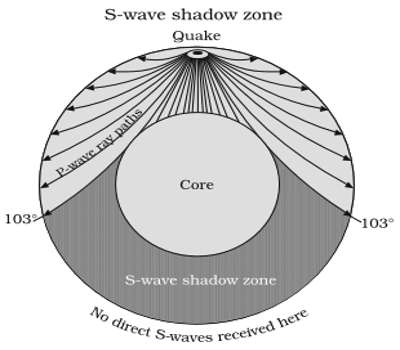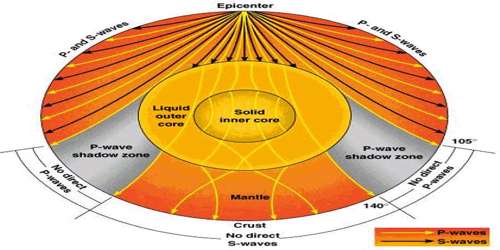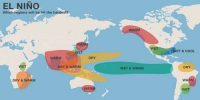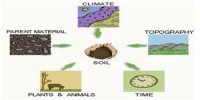Emergence of Shadow Zone of Earthquake
Earthquake waves get recorded in seismo-graphs located at far off locations. However, they exists several exact areas where the waves are not reported. Such a zone is called the ‘shadow zone’. The shadow zone results from S waves being stopped entirely by the liquid core and P waves being bent (refracted) by the liquid core.
The shadow zone is the region of the earth from angular distances of 104 to 140 degrees from a given earthquake that does not receive any direct P waves. The study of dissimilar events reveals that for every earthquake, them exists an overall dissimilar shadow zone. Figure (a) and (b) show the shadow zones of P and S-waves. It was observed that seismographs located at any detachment within 105° from the epicentre, recorded the entrance of both P and S-waves.

However, the seismographs located beyond 145° from epicentre, record the entrance of P-waves, but not that of S-waves. Thus, a zone between 105° and 1450 from epicentre was identified as the shadow zone for both the types of waves. The entire zone beyond 105° does not receive S-waves. The shadow zone of S-wave is much bigger than that of the P-waves. The shadow zone of P-waves appears as a band around the earth between 105° and 145′ away from the epicentre. The shadow zone of S-waves is not only bigger in size but it is also a small over 40 per cent of the earth exterior. You can draw the shadow zone for any earthquake provided you know the position of the epicentre.















